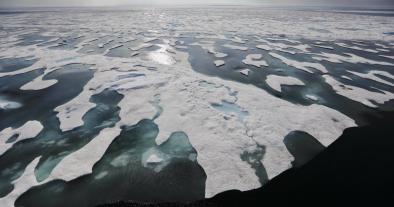Science Source
Climate-driven polar motion: 2003–2015
- States Earth’s spin axis has been wandering along the Greenwich meridian since about 2000, representing a 75° eastward shift from its long-term drift direction
- States the past 115 years have seen unequivocal evidence for a quasi-decadal periodicity, and these motions persist throughout the recent record of pole position, in spite of the new drift direction
- Analyzes space geodetic and satellite gravimetric data for the period 2003–2015 to show that all of the main features of polar motion are explained by global-scale continent-ocean mass transport
- Finds the changes in terrestrial water storage (TWS) and global cryosphere together explain nearly the entire amplitude (83 ± 23%) and mean directional shift (within 5.9° ± 7.6°) of the observed motion
- Finds that the TWS variability fully explains the decadal-like changes in polar motion observed during the study period, thus offering a clue to resolving the long-standing quest for determining the origins of decadal oscillations
- States this newly discovered link between polar motion and global-scale TWS variability has broad implications for the study of past and future climate
Related Content
Science Source
| World Weather Attribution
Unusually high temperatures at the North Pole, winter 2016
Science Source
| Geophysical Research Letters
Accelerated increase in the Arctic tropospheric warming events surpassing stratospheric warming events during winter
S.‐Y. Simon Wang, Yen‐Heng Lin, Ming‐Ying Lee et al
Science Source
| Bulletin of the American Meteorological Society
EEE 2016: CMIP5 Model-based Assessment of Anthropogenic Influence on Highly Anomalous Arctic Warmth During November–December 2016
Jonghun Kam, Thomas R. Knutson, Fanrong Zeng et al
Headline

Dec 12, 2017 | Mother Jones
The Arctic is warming faster than at any point in the past 1,500 years


